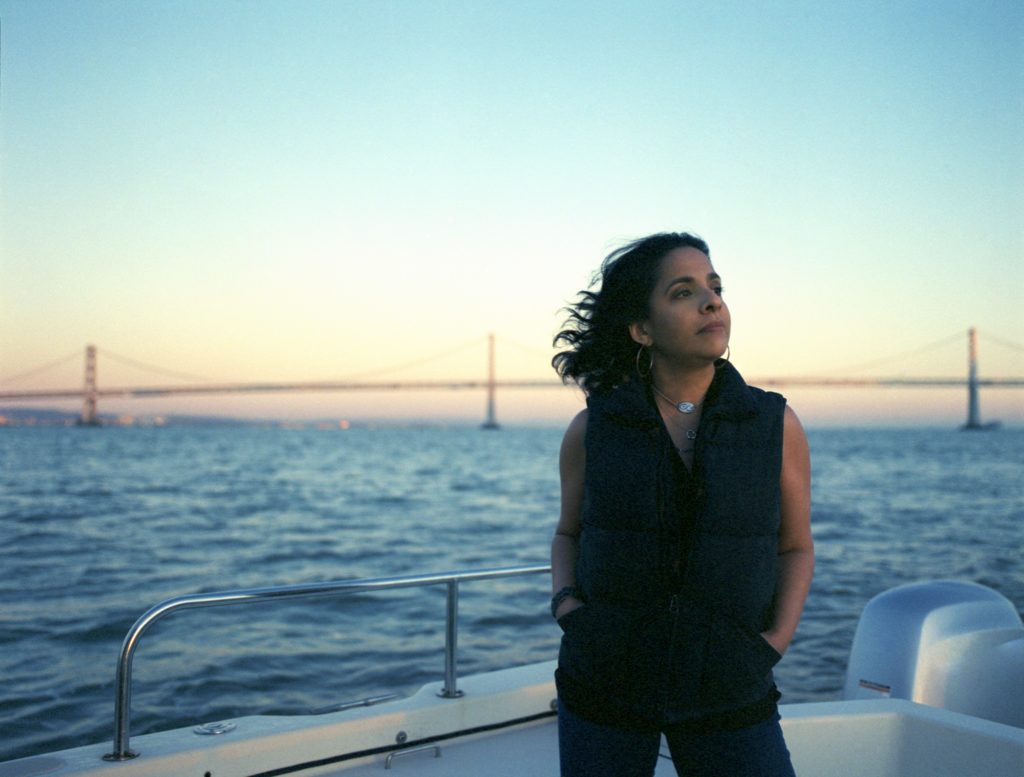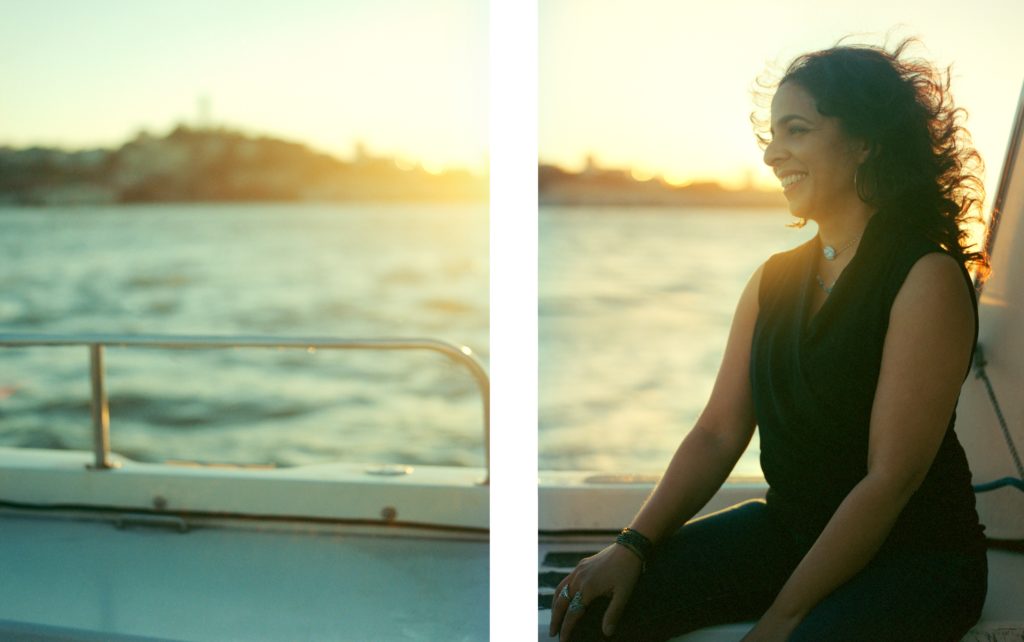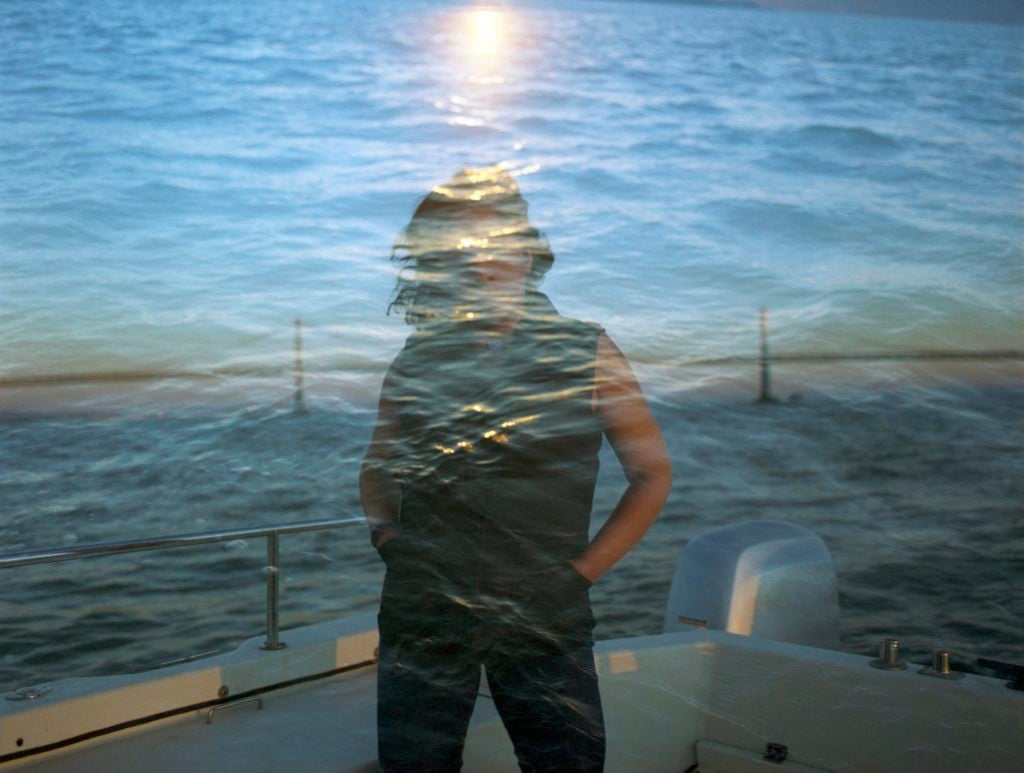The Doc of the Bay | Sejal Choksi-Chugh, San Francisco Baykeeper
By: ajcarapella
Sejal Choksi-Chugh is leading the fight to restore San Francisco Bay to health.

By Robin Meadows.
Photos by ©Chloe Aftel, courtesy of Culture Trip.
用中文阅读 / Read in Chinese
San Francisco Bay is part of the largest estuary on the west coast of the Americas, with headwaters that tumble from the Sierra Nevada Mountains, swell California’s longest rivers, and then rush through the Golden Gate to join the Pacific Ocean. The bay is also the heart of a bustling metropolitan area and touches nine counties, unifying the region known as the San Francisco Bay Area and providing respite from the crush of day-to-day living.
Sejal Choksi-Chugh is the San Francisco Baykeeper, and there’s no place she’d rather be than out on the water.
“There’s a special feeling of freedom in zipping across the bay in our patrol boat with the wind in my face, the smell of salt in the air, and breathtaking skylines all around us,” she says. “It always renews my spirit and helps me feel inspired for the work I do.”
Sejal’s work is greatly needed. More than 500 wildlife species, from salmon to seals to shorebirds, depend on the vast wilderness of the bay, and more than seven million people live around it in one of the nation’s densest urban areas. The region is heavily industrialized: a wide range of facilities, including sewage-treatment plants, metal recyclers and oil refineries ring the bay and discharge their waste into its waters.
Sejal grew up in the suburbs of Atlanta, Georgia, the daughter of immigrants from India, who, like so many others, came in pursuit of the American dream. When she thinks back to the childhood influences that shaped her, two moments stand out. The first was during a family visit as a young child to her parents’ homeland, where she was shocked to see poor children drinking dirty water from puddles in the street.
“It was my first awareness that pollution affected people directly,” she recalls. “I couldn’t wrap my seven-year-old mind around why these kids didn’t have clean water to drink. But even then I felt the injustice.”
Later, she witnessed pollution closer to her Georgia home. A cement plant beside a creek near her high school often covered the area in a thin film of dust by the end of the school day.
“The yellow dust coated everything from our cars to the surrounding school fields, and got into the creek,” she remembers. “I recall feeling angry and asking my parents and teachers what could be done, and they said that’s just the way it is. That was one of my first realizations of how powerful polluters could be.”
As an undergraduate at Emory University in Atlanta, Sejal took an environmental-studies class and had what she calls “an ‘aha’ moment” that sparked her decision to go to law school. “The course opened my eyes to what a powerful instrument the law could be in stopping polluters and bringing them to account, and I wanted to see that change everywhere and be a part of making a difference.”
She moved to the San Francisco Bay Area to attend the University of California, Berkeley, Law School. While there, she interned with several national environmental groups that had offices in the bay area. But Sejal felt like a small cog in these organizations and was dismayed at how long it sometimes took to get things done and how far away from the “action” she was. She started working at Baykeeper right out of law school, winning a competitive Equal Justice Works legal fellowship, and joined the staff full-time in 2004, after the fellowship ended.
“I was attracted to Baykeeper because it’s a small, nimble organization that’s on the frontlines of defending the bay” she says. “And I was impressed by their legal and policy victories. They were stopping big polluters like Dow and Chevron and making a difference locally.”

“Sejal envisions a time of greater awareness and stewardship of the bay. ‘Government agencies would better enforce the laws, companies would stop their harmful activities, and residents would share a sense of responsibility for the health of the bay,’ she says, in full knowledge that for her and Baykeeper there will be many fights ahead before that vision comes true.”
Law school classmate Dave Owen, who is now a professor at Hastings College of the Law in San Francisco, highlights one quality that has made Sejal such a good fit with Baykeeper:
“Besides litigation, the job involves networking and fundraising, and Sejal is really personable and really good at making connections.”
Baykeeper’s success at holding big polluters accountable is equally strong. Sejal is particularly proud of Baykeeper’s success preventing sewage spills in the bay. Beginning in 2005, Baykeeper staff combed through the spill reports of municipal wastewater-treatment plants, which are required by law, and found that many cities in the bay area far exceeded U.S. Environmental Protection Agency standards for these incidents. The worst results were for the City of Richmond, which had over 100 sewage spills per 100 miles of sewer lines. The EPA’s standard is three spills per 100 miles.
Baykeeper focused on the top 10 polluting systems, and decreased the sewage spills from these cities by 75 percent.
“That’s millions of gallons less sewer water in the bay every year,” Sejal says. “Our track record is so strong because we have experts on staff who sit down with the cities and work out technically sound solutions.” She adds that this is the method behind all of Baykeeper’s litigation and points with pride to the fact that in about half of the cases the defendants actually express gratitude for helping them comply with the law. This approach taps another of Sejal’s talents.
“She’s tough and diplomatic at the same time,” says Peter Molnar, Baykeeper’s board chairman. “She can pivot from fighting to fixing the problem.”
Baykeeper has also gotten high marks for its work cleaning up mercury, which accumulates in fish and threatens local residents and fish-eating wildlife.
“The regional water board’s proposed plan was to let mercury flush out of the bay naturally over the next 120 years,” she says. “I said, ‘That’s not a plan, that’s just running from their responsibilities.’” So she led a push for a better plan: identifying, then ratcheting down on all sources of mercury, including stormwater, wastewater-treatment plants, and “tailings” from the region’s many former mercury mines. A revised mercury-cleanup plan, called a “Total Maximum Daily Load” (TMDL), was approved by the EPA for San Francisco Bay in 2008.
Andria Ventura, the California toxics-program manager of Clean Water Action, a national nonprofit group based in Washington, D.C., who collaborated with Sejal on the TMDL, calls it an “amazing victory,” and she credits Sejal with giving her the technical expertise to tackle subsequent TMDLs independently. “Sejal doesn’t just do great work at Baykeeper,” says Ventura. “She has influence beyond her own organization.”
Baykeeper also scored a major victory against the export of petroleum coke, which is produced at bay area refineries, and coal, which is brought into the bay area by train and truck from as far away as Utah. These dirty fuels are shipped overseas from a privately owned terminal in the Port of Richmond. In 2012, the Baykeeper team was patrolling the channel near the terminal while a container ship was being loaded, and they documented toxic coal and petcoke being spilled into the bay.
“It was just falling all over the place — on the dock, into the water,” she recalls.
After taking their evidence to the regional water board to no avail, Baykeeper sued the terminal. The ensuing fight lasted two years and the costs of the litigation nearly exhausted Baykeeper’s reserves. But Sejal’s resolve also rallied Baykeeper’s backers. Local funders learned about the budget stress and offered to provide onetime grants and no-interest loans to help Baykeeper see the litigation through to the end.
“We ended up not needing those kind offers, but the situation made our supporters realize how important it is that that Baykeeper be financially sustainable,” Sejal says. “They want us to be able to continue to fight big polluters, and that was the impetus behind our board starting a legal fund. It’s a separate reserve-fund that we now fundraise for to get us through tough cases.”

The judge in the export-terminal case eventually ordered the parties to enter settlement negotiations. But the atmosphere was so hostile that the two sides were assigned to separate rooms in the courthouse, and negotiations dragged on for months. Finally, Sejal decided something bold had to be done to break the stalemate. She knew that the facility owner was worried about the costs of compliance, claiming that Baykeeper was seeking “blood” and wanted to put the company out of business.
“Our staff scientist was in the room and I asked him how much he thought it would cost for the facility to meet water-quality standards,” Sejal says. “He literally did a back-of-the-envelope calculation. It turned out the cost to comply was going to be just shy of $1 million.” “So I went down the hall, knocked on their door while they were meeting with the judge, and said, ‘I have a proposal that won’t put you out of business,’ There was a moment of silence and then they said, ‘Come in and tell us more.’”
She proposed a cap on the dollar amount of the settlement and a provision that Baykeeper would set the terms of the mitigation. With the cap set at $1 million, the facility was to be retrofit to Baykeeper’s specifications, with upgrades that included sealing the dock to keep the toxic materials from falling through the slats, switching to closed conveyer systems to load the coal and petcoke, installing barriers around the uncovered stockpiles, and spray-misting the piles to keep dust from blowing into the bay. This satisfied the terminal’s owners and operators, the case was settled within a few months, and the facility is no longer polluting the bay.
But Baykeeper is now engaged in another battle against coal, opposing a proposal for another export terminal in Oakland. It is also working to block the expansion of the five oil refineries around the bay, which are among the biggest polluters in the region. Another item on Sejal’s long wish list for the future includes curtailing invasive species that hitchhike around the world in the ballast water of ships in such numbers that a new one is introduced to the bay every other week. Climate change is also a pressing concern, as rising sea levels could wash contaminants from more than a thousand polluted shoreline sites into the bay. And there is a statewide battle brewing that pits long-standing water diversions for industrial agriculture against the critical need to increase fresh water flows to the bay.
In spite of all the obstacles still to be faced, Sejal envisions a time of greater awareness and stewardship of the bay.
“Government agencies would better enforce the laws, companies would stop their harmful activities, and residents would share a sense of responsibility for the health of the bay,” she says, in full knowledge that for her and Baykeeper there will be many fights ahead before that vision comes true.
Robin Meadows is a science journalist in the San Francisco Bay Area. She is the water reporter for the Bay Area Monitor, and her work has also appeared in Audubon, Conservation, High Country News, Water Deeply and others.
海湾医生 | Sejal Choksi-Chugh, San Francisco Baykeeper
作者:Robin Meadows
翻译者:Katherine Olson
照片: ©Chloe Aftel, courtesy of Culture Trip.

旧金山湾位于美国西海岸最大的河口。其水源头从Sierra Nevada山脉流起,往加州最长的河流里冲水,再穿过金门桥汇入太平洋。旧金山湾作为繁华城市的核心,同时也跟九个县有接触,还将称之为“旧金山湾区域”的组成地区联合起来并给忙碌的、工作压力巨大的市民一个放轻松和娱乐的场地。
Sejal Choksi-Chugh是旧金山护湾者。在她眼里,除了水上之外没有任何她更渴望去的地方。
她说,“坐上我们的巡逻船快速地在海湾中飞奔,风吹着我的脸,空气中有盐味,四周一片美景,这真是一种很特别的自由。每次坐上船,我的精神就会恢复起来,我重新为自己所从事的工作感到启发。”
当地迫切需要Sejal的工作。鲑鱼,海豹,沙滩鸟等500多种野生动物依赖于海湾的广阔天然环境,而且周边的城市地区是全国最密集的之一,人口超过七百万。这个地区的工业化程度相当高:海湾周围围着一圈污水处理厂,金属回收商以及炼油厂,这些厂都往海湾中排水。
Sejal是在乔治亚洲亚特兰大市长大的,是印度移民家长的孩子。像很多人一样,她父母过来美国追求自己的美国梦。当她想起小的时候塑造自己的各个因素,两个时刻特别突出。一个是在小的时候去她父母的家乡。在那里,她很惊讶看到贫穷孩子从街上的脏水潭里取水喝。
她回想起来,“那是我第一次意识到,污染能对人们的生活造成直接的影响。七岁的我根本无法搞明白这些孩子具体是因为什么原因才拿不到清洁饮水,但是我还是感受到了这件事情是如此的不公正。”
几年之后,她在自己的乔治亚家附近见证了污染。由于位于她高中附近一条小溪旁边的一个混凝土厂,每天放学的时候,整个地方经常被薄薄的一层灰尘覆盖。
她回想起来,“黄色的灰尘覆盖了一切。汽车,学校的草坪,甚至进入了小溪的水中。我记得当时的自己挺愤怒的,我问了我的父母和老师这件事情有没有办法解决,他们说,就是这样子的。那是我其中第一次意识到污染者的真实势力。”
在亚特兰大市Emory大学读本科的时候,Sejal上了一个环境研究课程,经历了一个自称为“‘原来如此!’时刻”,这门课作为她决定上法律学院的启发。“课程带我了解到了,在拦住污染活动并强迫污染者为自己的行为负责方面,法律是如此有力量的工具。我想到处看见这样的变化,我想自己作出贡献。”
她搬去了旧金山湾地区,上了加州大学伯克利分校法律学院。上学期间她还在几个在旧金山有办公地点的国家环境组织做了实习。不过,她总感觉自己的贡献和意义很渺小,看到做任何事情需要花费的巨长的时间觉得很不满,感觉自己离真正的行动还非常遥远。她上完法学之后直接开始在护湾者上班,获得了抢手的Equal Justice Works法律实习。2004年,实习完了之后,她成为了全职工作人员。
她说,“我被护湾者吸引了是因为组织很小,很灵活,一直处于维护海湾的前线。而且,我非常敬佩他们的法律和政策胜利。他们停止了Dow,Chevron等大污染企业造成的环境破坏,在当地带来了明显的变革。

“Sejal的远景是公众能够对海湾有更高的意识,海湾能被管理的更好。她说,“如果远景成真了的话,那政府机构会执法的更好,公司会停掉自己的破坏性活动以及当地居民会共同享受对海湾的健康的责任感。”她完全知道,在远景实现之前,她自己以及护湾者还需要面临许多的挑战。”
法律学院同学Dave Owen在旧金山Hastings法律学院任教授,他强调了一个使Sejal与护湾者配的特别好的一个特征。
“除了发起诉讼之外,这份工作还涉及到发展人脉以及捐款。Sejal是一个非常热情的人,很擅长跟人交流、建立关系。”
护湾者在让大污染者为自己的行为负责方面取得了很多成就。Sejal为护湾者预防污水泄漏的能力特别骄傲。自2005年起,护湾者工作人员梳理了城市污水厂的泄漏报告(这些报告是法律制定的),发现海湾地区许多座城市远远超越了美国环境保护局的污水泄漏发生频率标准。表现的最差的是Richmond市,每一百英里的下水道出现100多次泄漏,而EPA的标准才是100英里中发生三次泄漏!
护湾者加强了对十大污染下水道网络的关注度,最终将这些城市的污水泄漏频率减少了75%。
Sejal说,“这意味着,每年冲入海湾的未经过处理的下水道污水量减少几百万加仑。我们为什么如此的成功呢,就是因为我们的工作团队中有愿意与城市谈判、搞定技术靠谱的解决方案的专家们。”她还补充,护湾者打官司时也使用这个方法,还骄傲地强调,在约一半的案子上,被告甚至会感谢护湾者帮助自己遵守法律。这个做事情的方式也是Sejal的其中一个才能。
护湾者董事会主席Peter Molnar说,“她即严格又擅长人际关系。她能从战斗模式直接转向解决问题模式。”
护湾者的汞清理工作也得到了不少人的敬佩。汞积累在鱼的身体组织中,对当地居民以及食鱼野生动物造成危害。
Sejal说,“当地水董事会的规划就是要在将来120年中,让汞自然被冲走。“我说,这不是计划,这就是推卸责任。’因此,她推广了一个更好的计划:识别出来所有汞来源(包括暴雨地表径流,污水处理厂以及当地曾经的汞矿山的“尾矿”等),然后对其执行严格的管理和监督。2008年,EPA通过了旧金山的“每日最大污染负荷”(TMDL),是经过了进一步修改的汞清理计划。
总部为华盛顿的非营利组织清洁水行动的加州毒物项目管理员Andria Ventura在TMDL项目上跟Sejal合作,管这个叫做一个“了不起的胜利”,还感谢Sejal给她的专业知识,有了这个基础之后她有能力自己搞定接下来的TMDL。Ventura女士说,“Sejal的杰出工作并不局限于护湾者。她的影响范围远超越了自己组织内部。”
护湾者还在石油焦炭出口(焦炭在海湾本地的炼厂制备)方面以及煤炭(火车和卡车上运过来的,甚至有来源于远远的犹他州的煤炭)方面获得了大胜利。这两种脏燃料由Richmond海港一个私有出口端运出国外。2012年,护湾者团队在出口端附近的海峡上进行巡逻,正好有货运船正在装货物,护水者记录下来了毒性煤炭和石油焦炭泄漏入海湾。
她回想起来,“燃料到处撒,码头上,水里,都有。”
护湾者将证据带给了当地水董事会,没有效果,护湾者就跟出口端打了官司。双方进行了两年的斗争,诉讼的费用几乎用尽了护湾者的存款。但是,Sejal的坚定态度给了护湾者的捐款者启发。当地捐款者知道了预算方面的压力,愿意提供一次性的资金以及无利润贷款以帮助护湾者把诉讼奋斗到底。
Sejal说,“最终,我们没有需要大家提出的善良方案,不过这整个情况让我们的支持者意识到,护湾者做经济可持续性的组织有多重要。他们希望我们能够继续与大污染者奋斗,这也是我们的董事会开始做法律资金的主要动机。这个资金跟普通资金不同,是用来帮助我们顺利完成那种特别难搞定的案子的一种存款。”

最终,出口端案例的法官命令双方进入法律协议。不过,氛围极不友善,法院不得不将双方安排在不同的屋里。谈判进行了好几个月。Sejal终于决定了需要做出大行动,打开僵局。她知道,厂的所有者担心遵守法律的成本,声称护湾者就是为了把公司搞死、使其倒闭。
Sejal说,“我们组织的科学家在屋里,我问问她,这个厂大概要花多少钱才能达到水质量标准?他做了一个很粗糙的计算,发现遵守法律的成本不超过一百万美金。所以,我走到了他们的屋,在他们跟法官谈判时敲了一下他们的门,说,‘我有一个不会使你们公司倒闭的想法。’大家沉默了一下,然后对方说,‘进来吧,说说细节。’”
她提出了对法律协议金额设定限制,不过条件是,护湾者来决定环境修复的具体规则。金额限制为一百美金,厂必须按照护湾者的要求进行装修。装修的内容包括填充码头木块之间的缝隙以防止毒性物质掉进水里,换封闭的煤炭、焦炭输送系统,在没有覆盖物的堆周围安装围栏以及向煤堆喷水蒸气以防止灰尘吹入海湾。这个做法让出口端的所有者和经营者满意,在几个月内案子得到了解决,厂停止了其对海湾造成的污染。
不过,护湾者正进行着新的煤炭相关的奋斗,反对Oakland市提出要再建一个出口端。护湾者同时也在努力防止海湾周围五个炼油厂的进一步扩展,炼油厂是整个地区最大的污染来源之一。Sejal的未来目标清单还包括防止船舶压载舱所带来的入侵物种的到来,数量多达每各两个星期就有一种新的入侵物种被引入进来。气候变化也是一个较大的问题:海平面逐渐上升的水位有可能带过来来源于全球数千个污染沿海岸的污染物。还有,全州都忙着另一个战争:谁的需求更迫切,是工业和农业活动长久以来的调水权利,还是增强汇入海湾的淡水流量?
尽管面临着许多挑战,Sejal的远景依然是一个公众意识更高、对海湾进行的环境管理更好的时光。
她描述自己的远景,“政府机构会更好地执法,公司会停掉自己的破坏性活动,居民会共同对海湾的健康负责。”当然,她知道在实现这个远景之前,她自己以及护湾者还面临许多个战争。